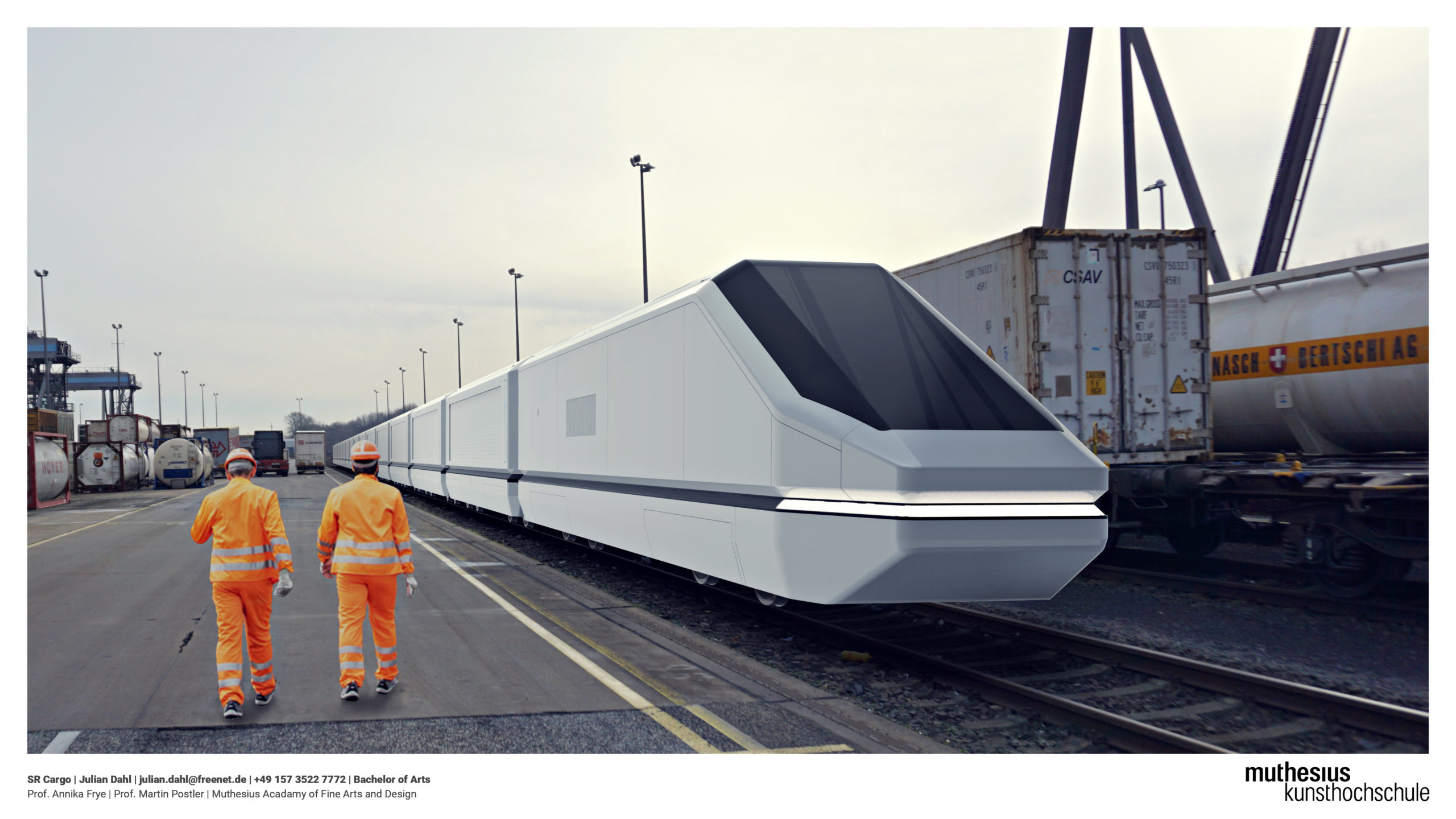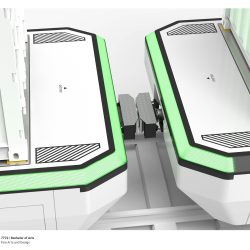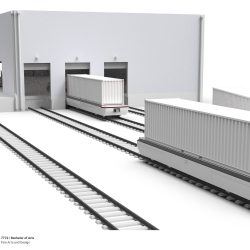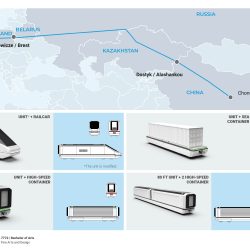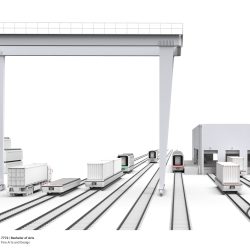SR Cargo
Description
SR-Cargo is an autonomous rail-freight system designed for intermodal transport. It consists of individual units that can be loaded with sea containers, high-speed containers and railcar modules. The units are connected to the overhead lines over long distances above the railcar module, but can also drive independently for short distances.What is the Topic?
The SR Cargo concept deals with the transport of goods in international rail freight traffic. The scenario is the new Silk Road, the route between Duisburg and Chongqing, which is to be extended to high-speed roads by 2050. Particular attention is paid to the intermodal terminals, the logistics centers and the temperature-controlled transports that shaped the concept and the design.
Why does it look like this?
The design was influenced by various parameters. Important factors were the dimensions of the 40ft container and the Intercity Express, which had to be taken into account in order to meet international standards in rail transport. Based on the basic parameters, a formal aesthetic was created that is reminiscent of the angular shape of the logistics industry. Display functions such as functionality, precision and modularity shape the formal shape. The chamfers at the top of the units and at the bottom of the modules indicate, the separation point of the two components.
What is special?
The special feature of this concept is the modular design. The basic element is the unit that unites the two train types [high speed and freight train] in one system. With sensor drive and battery elements, it is part of a cyber-physical system that can efficiently and environmentally friendly transport goods on long distances such as the new Silk Road. Especially the reefer containers, which are currently operated with diesel generators, can be supplied with power by the unit. Thus, goods such as wine or electrical components can be protected from the extreme temperatures in Russia or in the deserts of Kazakhstan and China.
What is new?
The concept restructures rail freight traffic and enables smooth and environmentally friendly transport. With no intermediate stops at shunting yards, the diesel-powered shunting locomotives fall away and the individual autonomous wagons can efficiently join forces to form wagon groups. The modular system consisting of the units, the container and railcar modules also increases flexibility, as both the high-speed trains and the freight trains with sea containers use the same substructure [units]. Also new is the direct connection of the logistics centers, which are still connected to the logistics network only with intermediate lorries.

